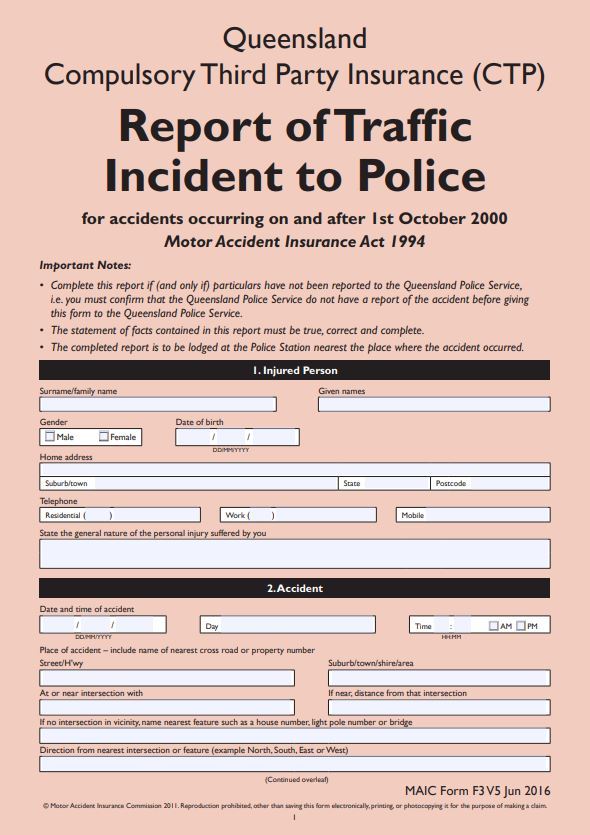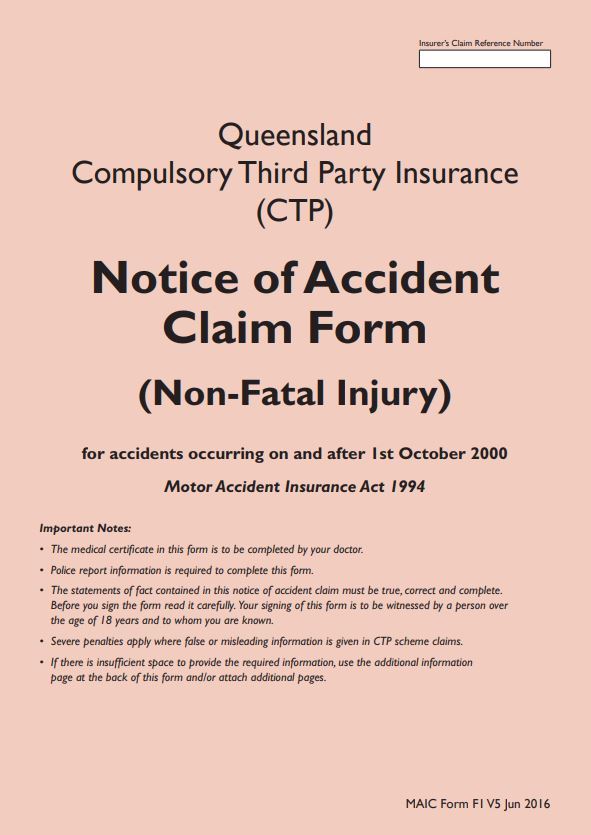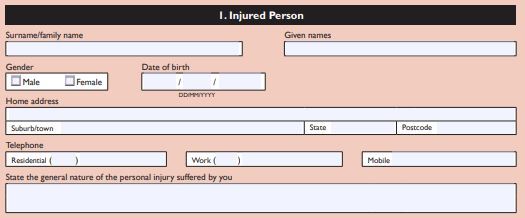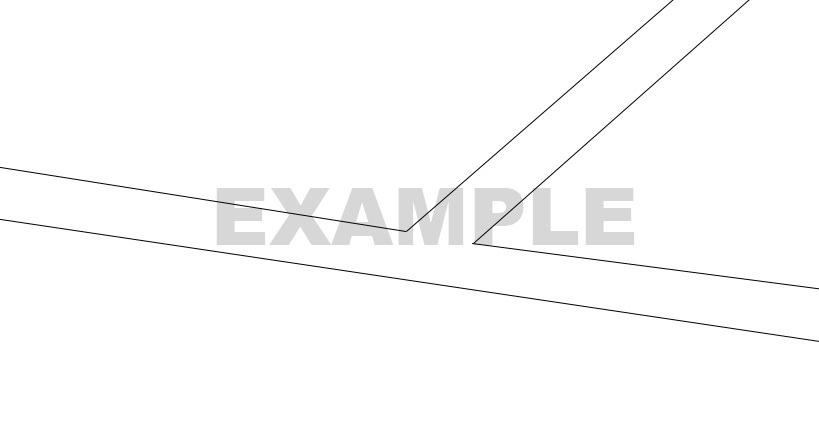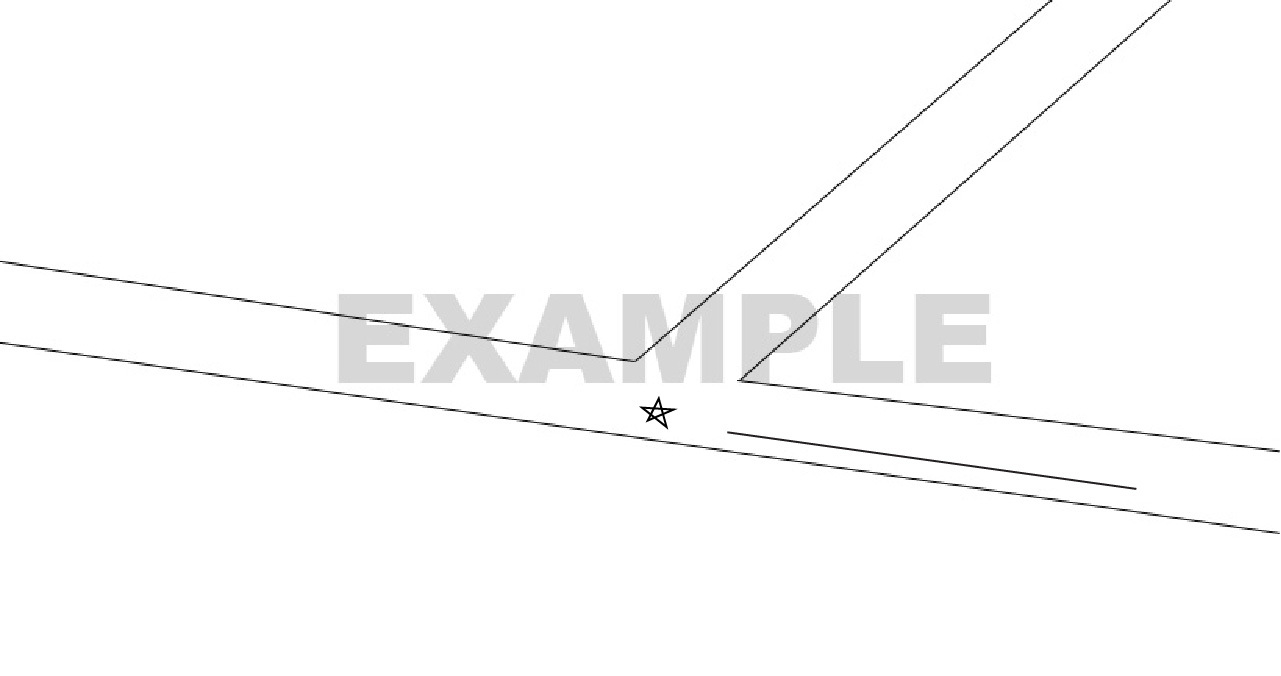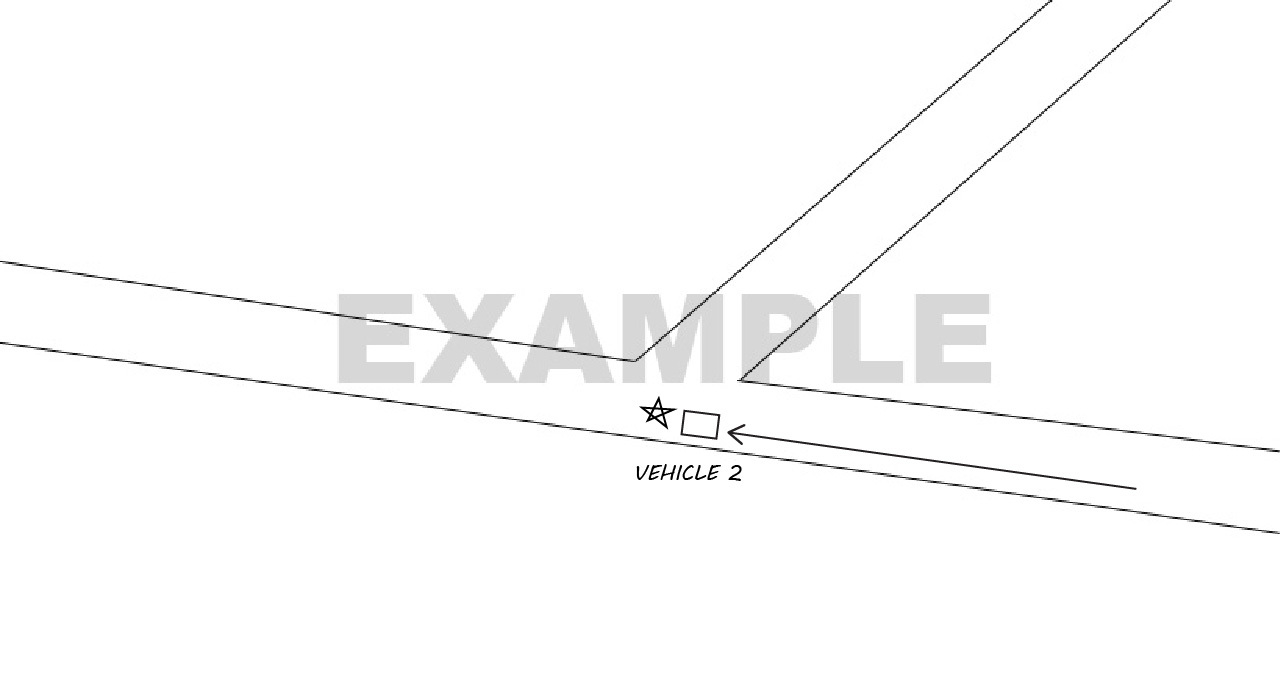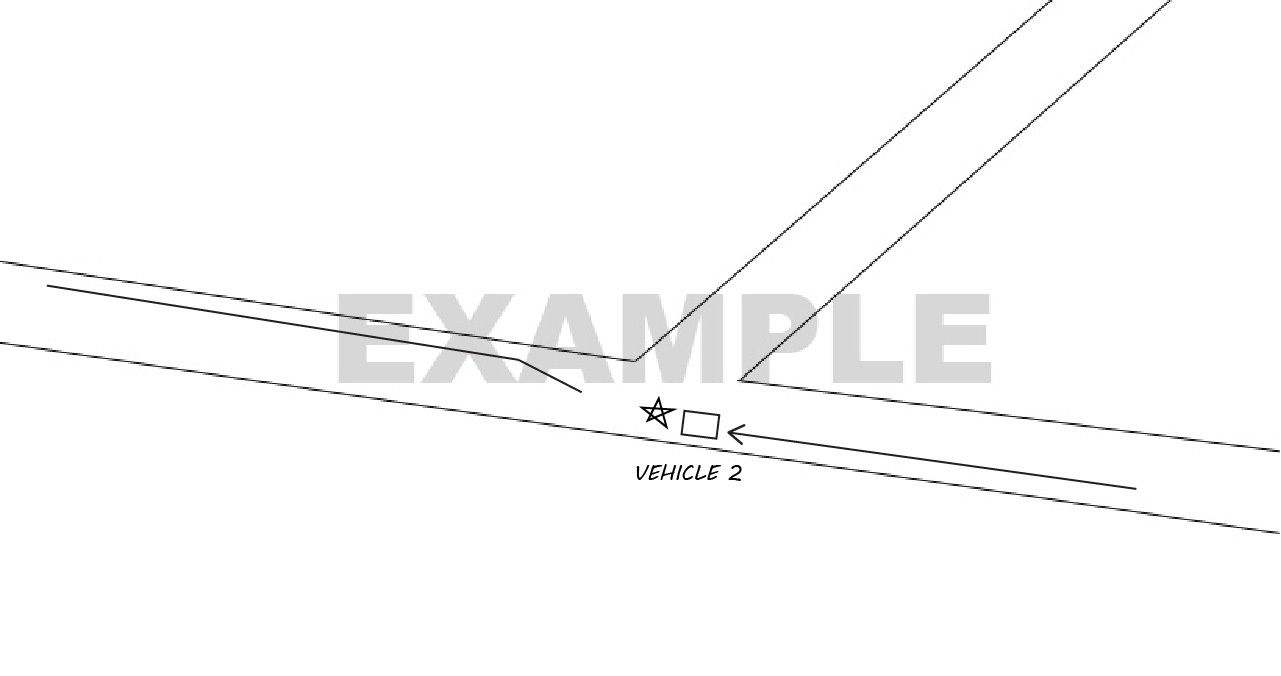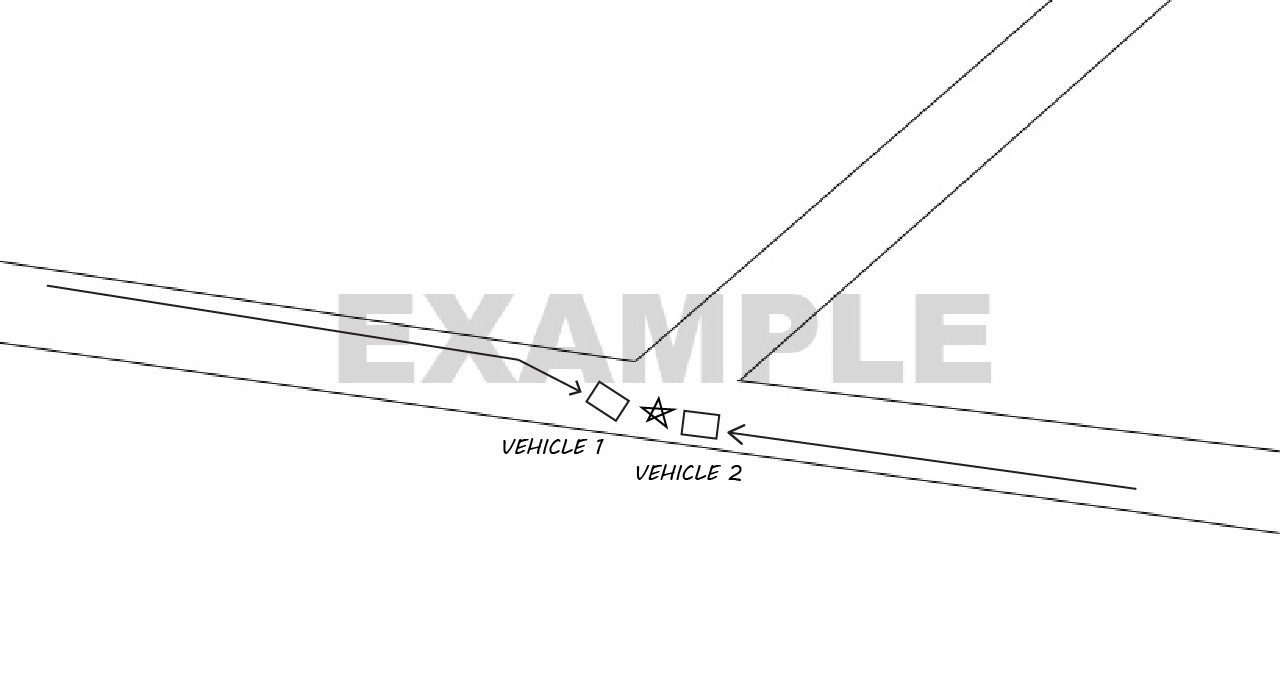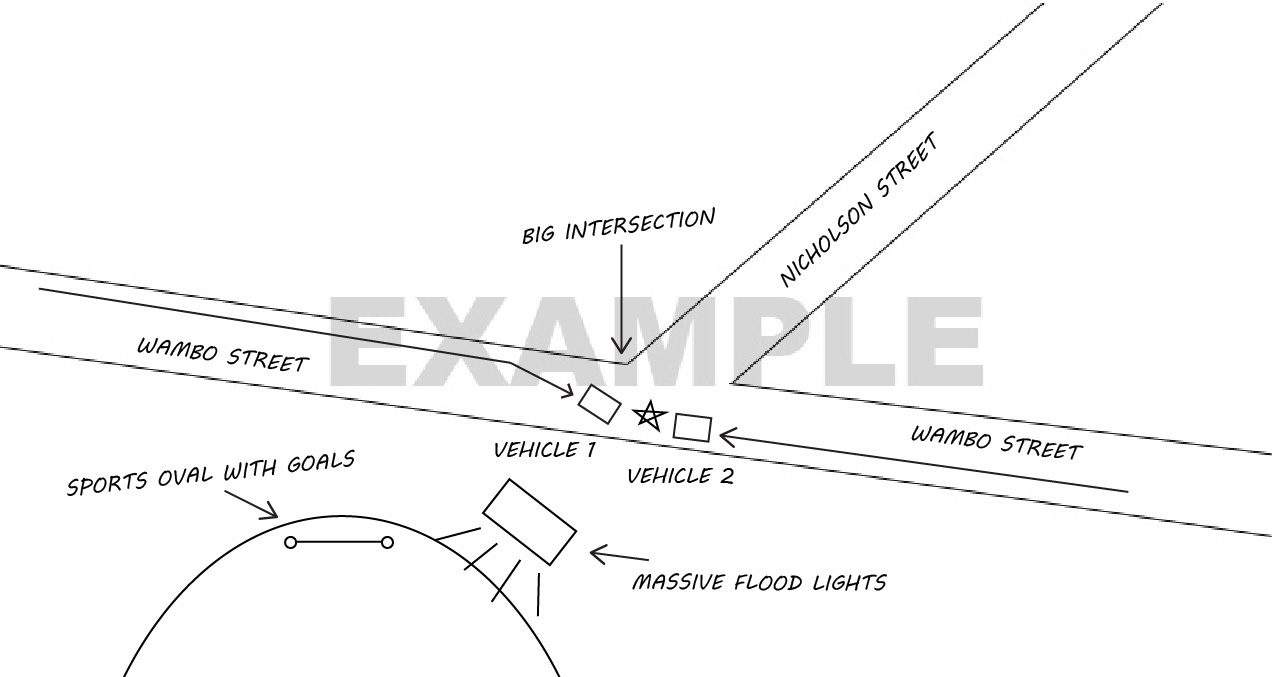This video and it's content are property of MCW Legal™ as it transitions through a re-brand to Sure Legal™.
HOW TO REPORT A TRAFFIC INCIDENT TO POLICE
If They did not attend the scene of the accident.
Lesson Essentials
Essential Resources
Linked Videos
Time Stamps
Lesson Contents
Stage 1: Establish Who Was Involved In The Incident
Stage 2: Describe the Incident
Introduction
We can all agree that being injured in a motor vehicle accident is not fun. Sometimes the damage to vehicles is minor, so the police are not called. And the injuries, like whiplash, can take hours, days, and even weeks to cause you discomfort.
In these types of accidents, the police are generally not called.
But to claim for injury compensation against the at-fault driver, the police have to be notified of the accident. They have to investigate it and they have to prepare a report.
Without this report, the insurer will or can deny your claim.
But we don't need to panic. It's an easy fix. We just need to fill out a Report of Traffic Incident to Police form. And don't worry, the particulars on this form are almost identical to some sections on the Notice of Accident Claim (NOAC) form, which you will also need to lodge with the insurer of the at-fault vehicle in order to claim compensation for your injuries.
The best way to fill out this Report of Traffic Incident to Police form is to go through a step-by-step process, so that when we have submitted our version of events to the police. They can get moving quickly. Complete their investigations. Finish their report. And we can refer to that report number on our Notice of Accident Claim form.
If you follow along with this article and the video above, you will be confident you will not get your claim knocked back because of an administrative technicality with the form, so that you can access the full amount of compensation that you're entitled to.
What You Will Learn
Here is what you will learn in this video:
We understand how people who are the victim of a car accident feel that they are being 'punished with paperwork'.
So we aim to keep things as simple and as factual as possible. And the method I'm going to show you for completing this form is exactly what we use in our legal practice. And we've used it to get the right results for all of our clients who reach out to us.
So let's get started with the first step, and that step is to record your personal details.
STAGE 1: Establish Who Was Involved In The Accident
You will need to download the Report of Traffic Incident to Police form before starting.
Then, there are 3-parts to this stage: Part A, your details; Part B, the details of other injured people; and Part C, the details of witnesses.
A
Part A: Your Details
You'll need the details of the injured person... that will be you.
Go to Section 1: Injured Person on the form, and fill out your surname and given name, gender, date of birth, your home address, your contact details, and then the general nature of the personal injury suffered by you.
So go ahead now and fill in the injured person section, paying particular attention to the injury section.
Make sure that your injury details align everywhere throughout your claim. There are other forms you need to fill out: medical forms, NOAC forms, this form.
So keep your story consistent, and make sure what you put down there when you're detailing your injuries is what you're going to write everywhere else throughout this entire claim process.
So that's all you need to do in this stage! Let's move on to the actual accident itself.
STAGE 2: Describe the Accident
We will establish how the accident occurred.
You'll need to go to 'Section 2: Accident' on the form. This is also pretty straightforward and self-explanatory, but let's dive in and check it out anyway.
This stage is also broken up into 3-parts: Part A: when and where the accident occurred; Part B: the vehicles involved in the accident; and Part C: a description of how the accident occurred.
A
Part A: When and Where the Accident Occurred
So let's do the first bit, the when and where. Then when is obviously the date and time of the accident.
The where is slightly more complicated.
We put in the nearest crossroad or property next to where the accident occurred. If there's no intersection, then mark some other landmark like a light pole, a bridge, or something else of importance so that the police, if they have to, can get to the accident scene and know exactly what you're talking about.
You will also need to indicate direction from the nearest intersection or feature, so north, south, east, or west of that.
Once you've knocked that out of the road, let's press on and identify all the vehicles that were involved.
Handy Resource!
Before we do that, here's a handy resource that will help you complete this section! It's a rego check for make and model of vehicles. You'll just simply punch in the rego number of the other cars in the accident, and the make and model and their current registration status will show up.
B
Part B: The Vehicles Involved in the Accident
So let's get into this.
Vehicle 1 is the vehicle which was at-fault. So we fill that in quite simply with its rego number, the state, the make, and the body type. We then need the driver of that vehicle.
Then you have Vehicle 2, which will be your vehicle, if you're in a vehicle. And the same sort of details and the owner, driver's contact details.
There could be more vehicles, so there's a space there for Vehicle 3. And if you need additional space, just write it out and attach it to the form when you submit it.
You write down then what was your part in the accident, were you a driver, a rider, a passenger, a cyclist, pedestrian, or other.
So now we've identified all the players and the vehicles in the accident, including the witness/witnesses, it's time to tell the police your version of events.
C
Part C: Description of How The Accident Occurred
Now it's only a small space on the form, but don't be intimidated.
Add additional notes and attach them to the form, because this will be critical in allowing the police to investigate the accident quickly.
As you can see, there's not much room here. So I'd suggest we longhand and write out as much detail as we can. Make it as easy as possible for the police to understand your version of events. Give them as much evidence as you can muster.
Once you've written your story on a separate piece of paper, all you will need to write in this section is "Refer to additional information."
Let's go through a 7-Step Guide now to creating an accident diagram. This diagram will also need to be repeated when you fill out a NOAC form.
7 Step Guide: To Creating an Accident Diagram
3
Step 3: Identifying It
Mark your line of travel to the point of impact from about 20 to 100 meters away, depending on the situation.
It's a good idea, once you've drawn your intersections, to put a little star where the point of impact was.
Then you draw a line, stopping about a centimeter short of the point of impact. Because where that centimeter gap is between the end of your line and the star which represents the impact, you will put step 4.
So go ahead now, follow this 7-Step Guide, and draw your accident diagram. Draw it on a blank piece of paper a few times, and use a pencil and eraser until you've got it perfect.
C
Part C: Continued
So that's Part 1 of how the accident occurred.
Now we need to describe that diagram using a linear time-frame and some vehicle speeds to add some time dimension to your story. And here's a few pointers on how to do that.
It's called the 11-Step Guide to describing your accident. Very simple, just follow each of the following steps and fill in the blanks.
11 Step Guide: To Describing Your Accident
1
Step 1: Time and Date
Note the time and date moments before impact.
For example: Monday the 17th of October, 11:30 AM.
2
Step 2: Weather
Note the weather conditions.
For example: It was fine and sunny.
3
Step 3: Route
Note where you were traveling from and to. And remember, you're in Vehicle 2, because you're the not-at-fault vehicle.
For example: Vehicle two was traveling easterly along ABC road towards XYZ intersection.
4
Step 4: Speed of You
Note the speed limit and your speed.
For example: The speed limit on that section of the road is 60 kilometers per hour. Vehicle two was traveling at approximately 55 kilometers per hour.
5
Step 5: Traffic Signals for You
Note the traffic signals that were obeyed or ignored prior to impact.
For example: Vehicle two had a green light and continued through XYZ intersection.
6
Step 6: Direction
Note the direction and the road/street name on which the at-fault vehicle was traveling moments before impact.
For example: Vehicle 1 was traveling southerly along XXX road towards XYZ intersection.
7
Step 7: Speed Of The At-Fault Vehicle
Note the speed limit and the apparent speed of the at-fault vehicle.
For example: The speed limit on that section of the road is 60 kilometers per hour. Vehicle one was traveling at approximately 55 kilometers per hour.
8
Step 8: Traffic Signals Ignored for The At-Fault Vehicle
Note the traffic signals that were obeyed or ignored prior to impact.
For Example: Vehicle one had a red light and failed to obey, carrying on through the intersection.
9
Step 9: Your Evasive Action
Describe your evasive action when you became aware of the imminent collision.
For Example: Vehicle 2 saw the at-fault vehicle one was not going to stop at the red light, and braked hard.
10
Step 10: At-Fault Vehicle's Evasive Action
Describe the at-fault vehicle's evasive action when they became aware of the imminent collision.
For Example: Vehicle 1 began braking hard about two minutes into the intersection, and swerved left.
11
Step 11: Damage
Describe the collision in terms of where each vehicle was impacted.
For Example: The front of vehicle one on the passenger side only collided with the driver's side of vehicle two, impacting just forward of the front wheel.
Handy Tip!
Make a bullet-point list of these 11 points. Feel free to add in further relevant details, but these will get you started.
You should now have a list of 11 things describing, in a linear-time-fashion, using speeds, traffic signals, points of impact, of how the accident occurred.
So go ahead, follow the 11 steps to describe your accident. And copy your bullet point list to just underneath your accident diagram. Attach your accident diagram and your bulleted list describing the accident to the form.
And that's it! You've wrapped up the accident section, you've done it properly. Let's have a look at the final part, the declaration section.
STAGE 3: Completing The Declaration Section
Stage 3 is where we show you how to complete the declaration detail section. So to do this, you will need to go to Section 5: Declaration on the form. This is also very straightforward. You've almost completed your form. This will be quick.
1
Step 1: Get a Witness
You then need to have a witness present. That needs to be someone who's over 18 years of age and has known you for more than 2 years. Their details need to be recorded on the form.
2
Step 2: Sign the Form
On this section of the form, the injured person, that will be you, or an agent (if you don't have capacity to sign as a result of your injuries), need to sign.
If you didn't sign the form because you're incapacitated in some way, you didn't have capacity to sign because of your injuries, the person who did sign your form needs to put their details in the appropriate section.
So go ahead now and fill out Section 5: Declaration, making sure you have a witness to sign as well, or an agent if you don't have capacity to fill it out.
STAGE 4: Submit The Form
You need to submit the form to the police station that was closest to where the accident occurred.
For example: If the accident happened in Indooroopilly , you would choose the Indooroopilly Police Station when you lodge the form online.
In Summary...
Here's the summary of the list of the action items that you can take after watching this video to get some of your paperwork underway.
Stage 1: Establish Who Was Involved In The Accident
- 1Fill in '1: Injured Person', paying particular attention to the injury section
- 2Complete '3: Other Injured Persons' with basic details
- 3Complete '4: Witnesses' with basic details
Stage 2: Describe the Accident
- 1Indicate when and where the accident occurred
- 2Acknowledge the vehicles involved, noting Vehicle 1 is the at-fault vehicle
- 3Describe how the accident occurred using additional pages to complete the 7-Step Guide to diagrams and 11-Step Guide to describing your accident
Stage 3: Complete the Declaration Section
- 1Get a witness
- 2Sign the declaration as acknowledgement of your submission
Stage 4: Submit the Form
- 1Submit the form to the police station nearest to where the accident occurred
Your Next Step
All done! You now wait for the Queensland Police Report number before starting to fill out your NOAC form.
If you've received your QP Number and want to start filling out your NOAC form, you can watch the video on that here (coming soon).
Get A Free Form Check!
Your Notice of Traffic Accident report builds the QP Report which builds your Notice of Accident Claim Form.
... so what does that mean?
Basically, these 3 forms are extremely vital to your claim for compensation. They are the foundations, the building blocks, and the structure of a good claim. If you get this bit wrong, you may as well save yourself the time and not bother!
For that reason, I am happy to give you a Free Form Check.
I will audit it. I will note the changes you need to make to be compliant. And, I will send it back to you on the same day I received it.
All you need to do is email me your form!
Get in Touch
If you have any questions at all, feel free to reach out to me and I'll see what I can do to help.
My name's Ashley Tulley, you can find me at [email protected], or you can ring me personally on my direct line at 07 3014 6543.
Get Social
We'd love if you joined our Facebook Community. We post things that we are passionate about or that interest road trauma victims or issues in the systems that are supposed to support their recovery, as well as more unrestricted content like this.

Breaking down the smokescreen of uncertainty through a unique step-by-step approach.
MCW Legal© 2020 Privacy & Disclaimer


